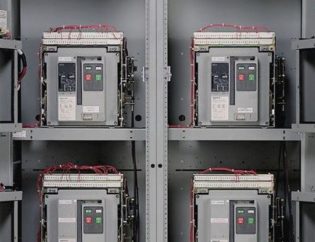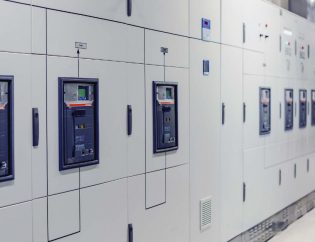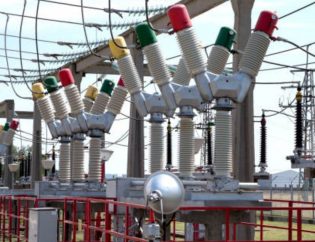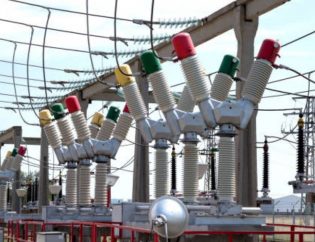HVAC and HVDC are both methods of transmitting electric power over long distances, but they differ significantly in their design and operation. Before we delve into the differences, let’s first understand the importance of power transmission.
Importance of Power Transmission
Power transmission is the backbone of modern society, and it plays a crucial role in economic and social development. Without efficient power transmission, sustaining industries, businesses, and homes would be impossible. Therefore, it is essential to have a reliable and robust power transmission system to ensure the continuous supply of electricity.
Electricity is generated in power plants, usually located far from the cities and towns where the electricity is consumed. Therefore, electricity needs to be transmitted over long distances, and this is where the importance of power transmission becomes evident. The transmission of electricity from power plants to homes and businesses involves sophisticated technology and infrastructure, requiring careful planning and implementation.
Now let’s move on to the two different methods of power transmission, HVAC and HVDC.
HVAC Transmission System
HVAC stands for High Voltage Alternating Current. It is a method of power transmission that uses alternating current (AC) at high voltage levels to transmit power over long distances. The voltage level used in HVAC transmission is typically between 110 kV and 765 kV, although it can be higher in some cases.
Advantages of HVAC Transmission:
- Low cost of transformers: HVAC transmission can use transformers to increase or decrease the voltage levels, which makes it more efficient than HVDC transmission.
- Reliable and proven technology: HVAC transmission has been in use for over a century, and it is a well-established and reliable technology.
- Flexible operation: HVAC transmission can be operated at different voltage levels and frequencies, making it adaptable for use in different situations.
Disadvantages of HVAC Transmission:
- Limited power transmission capacity: The power transmission capacity of HVAC systems is limited due to the high impedance of the transmission lines.
- High transmission losses: HVAC transmission lines have high resistance, which results in significant energy losses during transmission.
- Electromagnetic interference: The high voltage levels used in HVAC transmission can cause electromagnetic interference, affecting communication systems and electronic devices.
Construction of HVAC Transmission Lines
HVAC transmission lines are constructed using overhead lines or underground cables. Overhead lines are the most common type of HVAC transmission lines, consisting of towers and conductors. The towers support the conductors and provide the necessary insulation and grounding.
Applications of HVAC
HVAC transmission transmits power over long distances, typically over 100 km. It connects power plants to the national grid and transfers power from one region to another. HVAC transmission is also used for interconnecting power grids between countries.
HVDC Transmission System
HVDC stands for High Voltage Direct Current. It is a power transmission method that uses direct current (DC) at high voltage levels to transmit power over long distances. The voltage level used in HVDC transmission is typically between 100 kV and 800 kV.
Advantages of HVDC Transmission:
- High power transmission capacity: HVDC transmission has a higher power transmission capacity compared to HVAC transmission, as it has lower losses and can transmit power over longer distances.
- Lower transmission losses: HVDC transmission lines have lower resistance and, therefore, lower energy losses during transmission compared to HVAC transmission lines.
- Ability to control power flow: HVDC transmission allows for better control over power flow, making it easier to balance the load and manage the grid.
Disadvantages of HVDC Transmission:
- High initial cost: HVDC transmission systems are more expensive to install compared to HVAC transmission systems, primarily due to the need for converter stations.
- Need for complex control systems: HVDC transmission requires complex control systems to manage the power flow and ensure stability.
- Limited frequency range: HVDC transmission is typically operated at a fixed frequency, which can limit its flexibility in some applications.
Construction of HVDC Transmission Lines
HVDC transmission lines consist of two converter stations, one at the transmitting end and one at the receiving end. The converter stations convert AC to DC at the transmitting end and DC to AC at the receiving end. The DC power is transmitted through underground cables or overhead lines.
Applications of HVDC
HVDC transmission is used for long-distance power transmission, typically over 500 km. It connects remote power sources, such as offshore wind farms or hydroelectric power plants, to the grid. HVDC transmission is also used for interconnecting power grids between countries.
Read More: An Introduction to Different Types of DC Motors
Comparison between HVAC and HVDC
Voltage Levels: The voltage levels used in HVDC transmission are typically higher than those used in HVAC transmission. HVDC transmission can operate at voltages up to 800 kV, while HVAC transmission is typically between 110 kV and 765 kV.
Power Transmission Capacity: HVDC transmission has a higher power transmission capacity than HVAC transmission. HVDC transmission can transmit power over longer distances with lower losses, while HVAC transmission is limited in its power transmission capacity due to its high impedance.
Transmission Distance: HVDC transmission is more suitable for long-distance transmission, typically over 500 km, while HVAC transmission is used for shorter distances, typically less than 100 km.
Construction and Maintenance: HVDC transmission requires converter stations at both ends, which makes it more expensive to construct and maintain compared to HVAC transmission. However, HVAC transmission lines require more regular maintenance due to the wear and tear on the overhead lines.
Cost: HVDC transmission is more expensive to install compared to HVAC transmission, primarily due to the need for converter stations. However, in some cases, the lower losses and higher transmission capacity of HVDC transmission can make it more cost-effective in the long run.
Conclusion
In conclusion, both HVAC and HVDC transmission systems play a crucial role in power transmission. While HVAC transmission is a well-established and reliable technology, HVDC transmission offers higher power transmission capacity and lower losses, making it more suitable for long-distance transmission.
As the electricity demand continues to grow, the future of power transmission will likely involve a combination of both HVAC and HVDC transmission systems, as well as emerging technologies such as superconducting power cables and energy storage systems.
Overall, the choice between HVAC and HVDC transmission systems depends on various factors, including the distance of transmission, power transmission capacity, and cost. Careful consideration and planning are necessary to ensure efficient and reliable power transmission.
Do you have a question in your mind? If so, make sure to fill out the form below!







